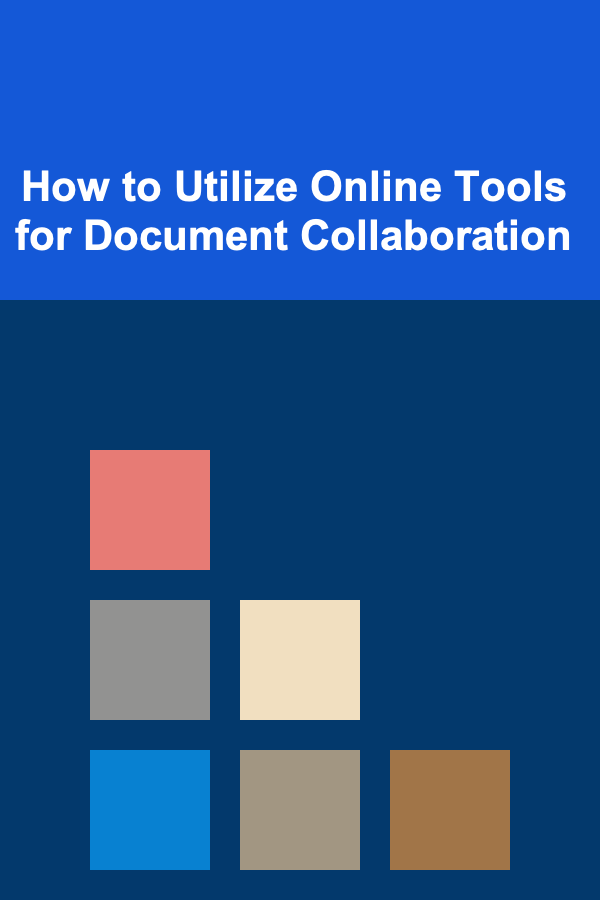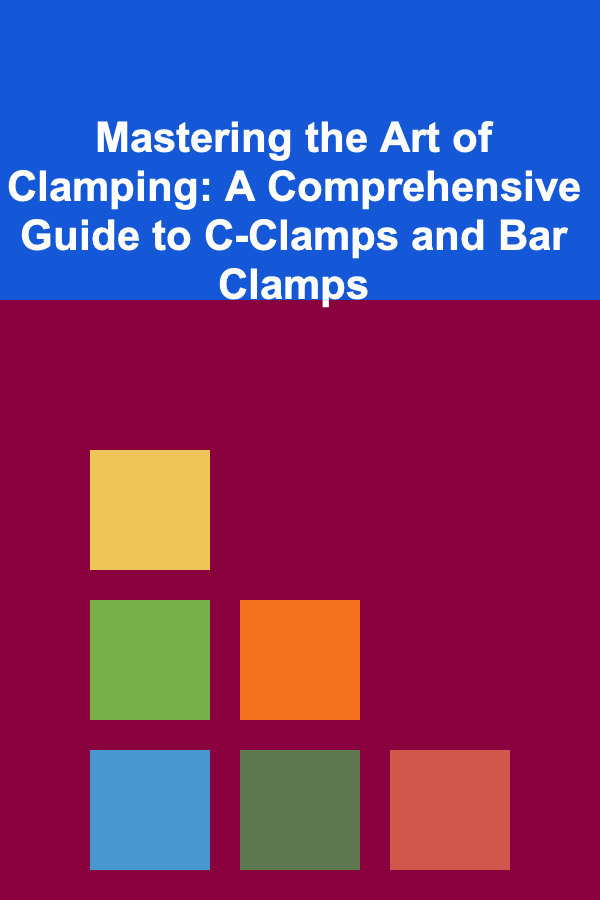
How to Set Financial Goals Using the Envelope Method
ebook include PDF & Audio bundle (Micro Guide)
$12.99$11.99
Limited Time Offer! Order within the next:
Not available at this time

The Envelope Method is a time-tested budgeting technique that has helped people gain control over their finances and achieve their financial goals. Whether you're saving for a vacation, paying off debt, or building an emergency fund, this method offers a simple and effective way to allocate your money and keep your spending in check. In this article, we will explore the Envelope Method in detail, show you how to set financial goals using this approach, and provide actionable steps to help you stay on track with your finances.
Understanding the Envelope Method
The Envelope Method is a budgeting system that involves physically dividing your money into different envelopes, each designated for a specific spending category. This method is based on the principle of cash budgeting, where you withdraw a fixed amount of money at the beginning of the month and allocate it to various categories such as groceries, entertainment, or utilities. Once the money in each envelope is gone, you stop spending in that category for the rest of the month.
The main benefit of the Envelope Method is that it creates a clear boundary between your income and spending. It forces you to make conscious choices about how and when to spend your money, which helps you avoid overspending and stay within your budget. By using cash, the Envelope Method can also help you develop better money habits and increase your awareness of your financial situation.
Step-by-Step Guide to Using the Envelope Method
1. Assess Your Income and Expenses
Before you start using the Envelope Method, you need to understand your current financial situation. Begin by assessing your income and monthly expenses. This will give you a clear picture of how much money you have available to allocate to different categories.
Income: Calculate your total monthly income after taxes. Include all sources of income, such as your salary, freelance work, or rental income.
Expenses: List all your monthly expenses, both fixed (e.g., rent, utilities, insurance) and variable (e.g., groceries, entertainment, dining out). Be thorough in tracking your spending for at least a month to identify patterns and understand where your money is going.
2. Set Financial Goals
Once you have a clear understanding of your income and expenses, the next step is to set specific financial goals. Your goals will guide how you allocate money into your envelopes and how you prioritize your spending.
Your financial goals can vary depending on your current situation and future aspirations. Some examples of financial goals include:
- Short-term goals: Saving for a vacation, purchasing a new gadget, or paying off a small debt.
- Medium-term goals: Building an emergency fund, paying down credit card debt, or saving for a car.
- Long-term goals: Saving for retirement, buying a house, or funding your children's education.
Make sure your goals are SMART (Specific, Measurable, Achievable, Relevant, and Time-bound) to keep them clear and actionable. For example, instead of saying "I want to save money," a SMART goal would be "I want to save $2,000 for a vacation in 6 months."
3. Create Your Envelope Categories
Next, create categories for your envelopes based on your expenses and goals. Some categories will be recurring monthly expenses, while others may be short- or long-term savings goals.
Here are a few common envelope categories:
- Fixed Expenses: Rent, mortgage, utilities, insurance, and subscriptions.
- Variable Expenses: Groceries, dining out, entertainment, transportation, and shopping.
- Debt Repayment: Credit card payments, student loans, or personal loans.
- Savings: Emergency fund, retirement fund, vacation savings, or large purchases.
- Fun Money: A category for discretionary spending, such as hobbies, clothing, or non-essential items.
For each envelope, allocate a set amount of money for the month based on your income and financial goals. For example, if your rent is $1,000, you would place that amount in the rent envelope. If you want to save $200 for an emergency fund, put $200 in that envelope.
4. Withdraw Cash and Fill Your Envelopes
Once you've set up your categories and budgeted for each one, it's time to withdraw cash from your bank account and fill each envelope with the designated amounts. This step is crucial because using cash makes you more mindful of your spending and helps prevent impulse purchases.
If you prefer to avoid carrying large amounts of cash, you can also use a digital version of the Envelope Method with a budgeting app. Many apps allow you to set up different categories and "envelopes" in the form of virtual accounts. The key is to stick to the budgeted amounts and track your spending diligently.
5. Stick to Your Budget and Avoid Borrowing Between Envelopes
The success of the Envelope Method relies on discipline. Once your envelopes are filled, it's essential to stick to your budget. If you run out of money in a particular envelope, you must stop spending in that category for the rest of the month.
For example, if you've allocated $300 for groceries and $100 for entertainment, and you run out of money in the entertainment envelope, you cannot use money from the grocery envelope to cover the shortfall. The goal is to train yourself to live within your means and make conscious decisions about your purchases.
If you consistently overspend in one category, you may need to reassess your budget and adjust your allocations. It's normal to make adjustments as you learn more about your spending habits.
6. Review and Adjust Your Envelopes Regularly
The Envelope Method is not a "set it and forget it" system. It's important to review your envelopes regularly to ensure that you're staying on track with your goals and making progress toward your financial objectives.
At the end of each month, review your spending and compare it to your initial budget. Ask yourself questions like:
- Did I stay within my budget for each category?
- Was I able to meet my financial goals?
- Are there any categories where I consistently overspend?
If necessary, adjust your budget and envelope allocations for the upcoming month. You might find that you need to increase your savings or reduce spending in certain categories.
Advantages of the Envelope Method
While the Envelope Method may seem old-fashioned, it offers several key advantages:
1. Increased Awareness of Spending
By physically handling cash and assigning it to specific categories, you become more aware of your spending habits. It's easy to overlook small expenses when using a credit card, but with the Envelope Method, you can see exactly how much you have left in each category, which encourages more mindful spending.
2. Prevents Overspending
The Envelope Method forces you to live within your means. Once the cash in an envelope is gone, you can't spend any more in that category, which prevents overspending. This built-in restriction helps you avoid impulse purchases and stick to your financial goals.
3. Better Control Over Budgeting
By allocating cash to specific categories and goals, you have more control over your budget. You can adjust your envelopes as needed, which allows for flexibility while keeping you on track with your goals.
4. No Need for Complex Software
Unlike some budgeting methods that require complex software or spreadsheets, the Envelope Method is simple and requires minimal tools. You only need cash (or an app, if you prefer a digital version) and envelopes. This simplicity makes it accessible to people who prefer a more hands-on approach to budgeting.
Disadvantages of the Envelope Method
While the Envelope Method has many benefits, there are a few challenges to consider:
1. Inconvenience of Carrying Cash
Carrying cash can be cumbersome, especially in today's digital world. If you're used to making payments through credit cards or mobile payments, carrying multiple envelopes may feel outdated.
2. Limited Flexibility for Non-Cash Payments
Some expenses, like online purchases or automatic bill payments, may require digital payment methods. The Envelope Method is more challenging to use for non-cash transactions, but there are digital alternatives that offer similar benefits.
3. May Be Difficult to Stick With
For some people, sticking to a cash-only budget can be difficult, especially if they have trouble resisting the urge to use a credit card or dip into another envelope. It requires strong discipline and planning to ensure that you stay within your allocated amounts.
Conclusion
The Envelope Method is a simple, effective budgeting strategy that can help you take control of your finances and achieve your financial goals. By setting clear goals, allocating money to specific envelopes, and sticking to your budget, you can develop better spending habits and make progress toward saving for future needs. While it may require some discipline and adjustments along the way, the Envelope Method offers a straightforward approach to managing your money and living within your means.

How to Create a Pantry Inventory Checklist for Grocery Shopping
Read More
How to Plan a Fun Family Game Night at Home
Read More
How to Prepare Quick & Healthy Weeknight Pastas
Read More
How to Select a Niche for Your Shopify Dropshipping Store: A Step-by-Step Guide
Read More
How to Utilize Online Tools for Document Collaboration
Read More
Mastering the Art of Clamping: A Comprehensive Guide to C-Clamps and Bar Clamps
Read MoreOther Products

How to Create a Pantry Inventory Checklist for Grocery Shopping
Read More
How to Plan a Fun Family Game Night at Home
Read More
How to Prepare Quick & Healthy Weeknight Pastas
Read More
How to Select a Niche for Your Shopify Dropshipping Store: A Step-by-Step Guide
Read More
How to Utilize Online Tools for Document Collaboration
Read More